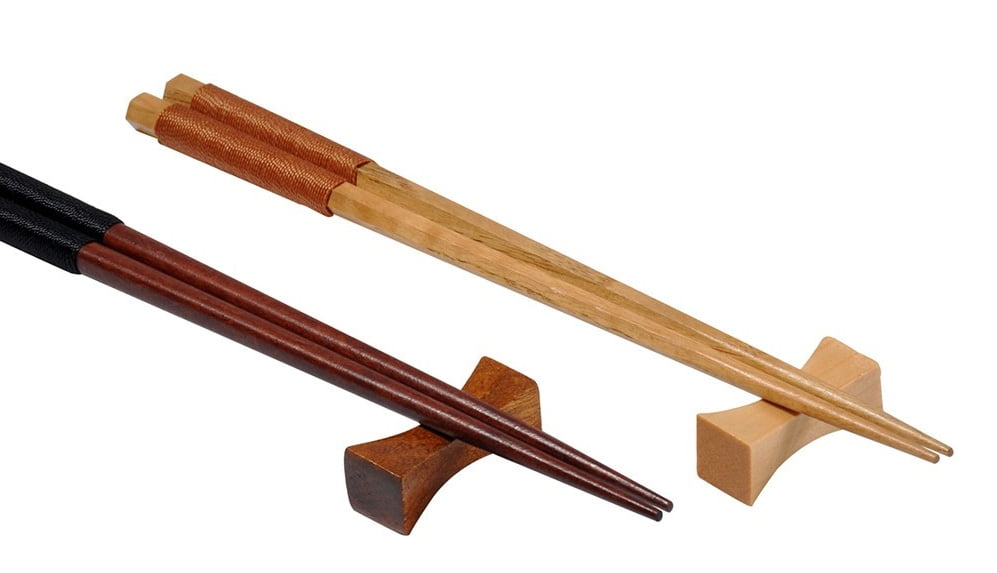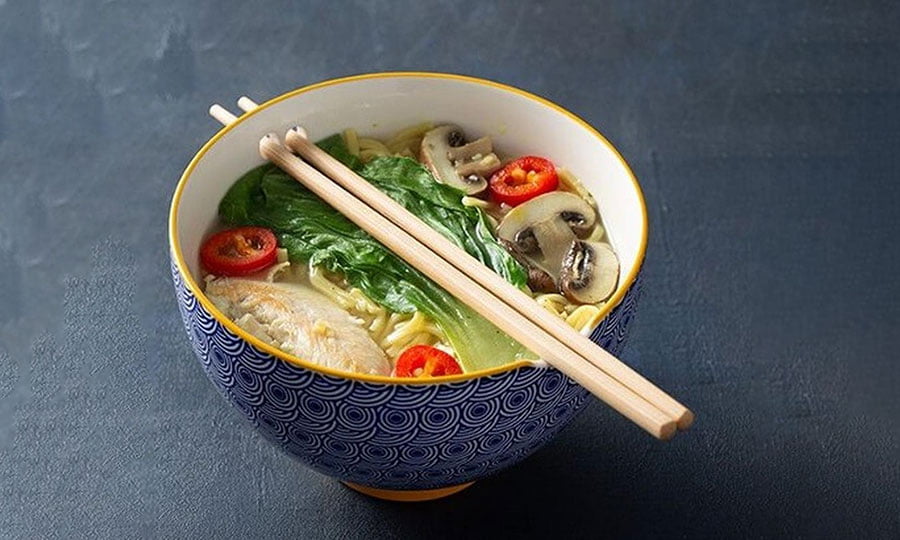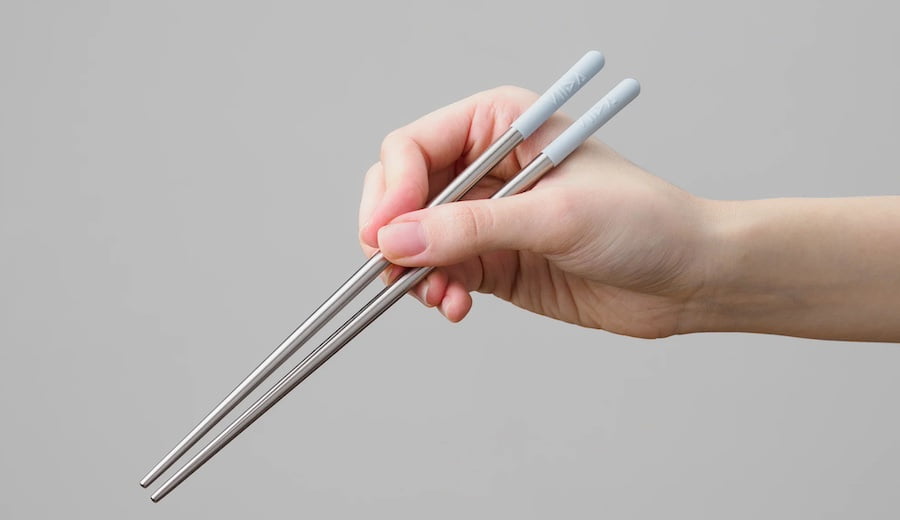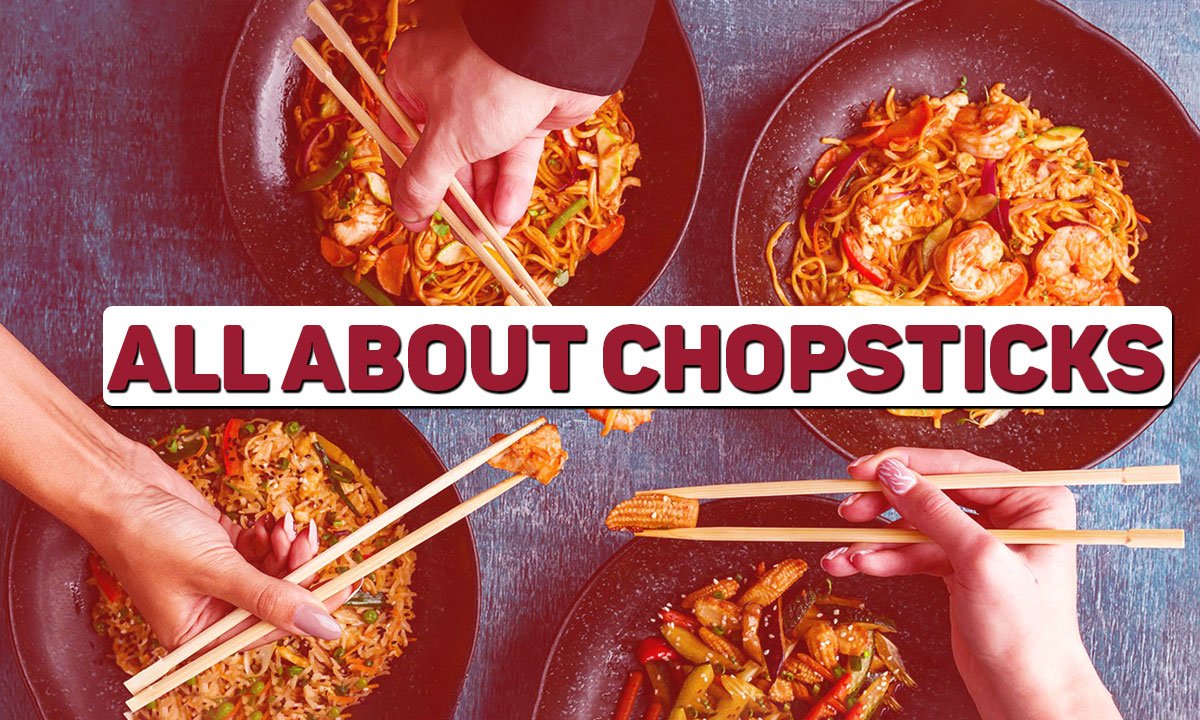When it comes to food tools, chopsticks are definitely one of the first ones that come to mind. This innovative eating tool went through many changes in form and custom before becoming one of the most important tableware in modern China, Mongolia, Japan, Korea, Laos, Thailand, Vietnam, and Burma. No one knows for sure where chopsticks came from, but scientists disagree on whether they were made in central China or in parts of Tibet and Nepal where people were closely connected to Han Chinese. History books from the 2nd century BC say that the last king of the Shang Dynasty used pearl chopsticks around 1100 BC. This suggests that wooden chopsticks may have been used 500 to 1000 years earlier.
Table of Contents
Where did Chopsticks Originate
The oldest chopsticks were found in the remains of the city Yen, which was built 3200 years ago and is near the city of Anyang in Henan. They are made of bronze. The early chopsticks’ size, shape, and material show that they weren not used for eating at first. Instead, they were used for cooking, stirring the fire, serving, and picking up food pieces. As the years went by, the materials used in Chinese courts to make chopsticks changed. Bronze chopsticks were popular during the Western Zhou Dynasty (1100 BC–771 BC). Lacquer chopsticks were popular during the Western Han Dynasty (206 BC–24 AD), and gold and silver chopsticks were popular during the Tang Dynasty (618 AD–907 AD). People thought that silver chopsticks could find poison in food, which made them more famous and brought them more attention. In fact, arsenic and cyanide, two popular poisons at the time, and bad eggs, onions, and garlic caused hydrogen sulphide, a chemical reaction that changed the colour of silver chopsticks. Jade, gold, bronze, agate, coral, ivory, and brass were some of the other more expensive items.
Slowly, chopsticks made their way across Asia by 500 AD. They were used in Vietnam, Korea, and Japan. In those early days, Japanese people thought of chopsticks as holy objects and only used them in sacred events. After a few hundred years, they went from being made of two joined pieces of bamboo to having the more modern look of two separate sticks. By the 17th century, they were making them out of lacquer wood.

Popularity of Chopsticks
It’s hard to explain how chopsticks became so popular in Asia. There were many reasons for this, but the most important was the practice of cooking food that was already cut into small pieces, so there was no need to use knives at the table. This made it easy to use chopsticks. The shape of modern chopsticks varies from country to country. The most well-known Chinese style is called Kuai-Zi, which means “quick little fellows.” They are 9 to 10 inches long, rectangular, and have pointy ends. Japanese chopsticks are shorter and have very sharp ends.
Japan and China use chopsticks more than any other country right now. Japan uses more than 24 billion pairs every year, and China uses more than 45 billion. The Chinese government put a higher tax on all chopsticks that can’t be recycled to better control how they are made and lessen their effect on the earth. This strategy greatly reduced the damage that this eating tool, which currently needs 25 million fully grown trees every year, does to the earth.

What is Chopsticks?
Chopsticks are a pair of thin, long eating tools that are popular in many East Asian countries, such as China, Japan, Korea, Vietnam, and others. Most of the time, they are made of pottery, metal, wood, bamboo, plastic, or plastic. You can pick up and eat a lot of different things with chopsticks, like rice, noodles, veggies, and meats.
Aesthetic: Chopsticks are usually long and thin, with a pointy end that tapers. Depending on the country and area, they come in different styles and lengths. Chopsticks from China are usually longer, while chopsticks from Japan are typically shorter and more delicate.
How to Use: To use chopsticks, you hold one in place and use the other to pick up food. Chopsticks are moved with the fingers and thumb, making it possible to handle small foods with accuracy. You have to practise a lot before you can use chopsticks well.
Materials: Many materials can be used to make chopsticks. Wood, bamboo, and ivory are all traditional materials. However, ivory is now heavily controlled because of worries about protecting wildlife. Often, plastic, metal, and clay are used to make chopsticks today. Each material has pros and cons when it comes to how long it lasts, how easy it is to use, and how it affects the world.
Significance in Culture: In many East Asian cultures, chopsticks are an important part of culture. People see them as a sign of respect, order, and peace. Depending on the community, there may be rules about how to hold chopsticks, how to pass food, and how to use them in a professional setting.
How to use a Chopstick
Chinese chopsticks have been an important part of Asian food for thousands of years, and many people still like to use them today. It might be hard to learn how to use chopsticks at first, but with some practice and help, you can get good at it. You will learn how to use chopsticks like a pro step by step in this detailed guide. Along the way, we will give you useful information and advice. So let’s dive into the world of chopstick skill and find out how to use this very old tool for eating.
To use chopsticks properly, you need to be dexterous, know how to use them and practise. To learn how to use chopsticks correctly, do the things listed below:

Hold one chopstick like a pen: To start, hold one chopstick in your strong hand like you would a pen or pencil. Put it between your thumb and middle finger to make a stable base for moving the chopstick.
Where to put the second chopstick: Put the second chopstick in the middle of your index and middle fingers. Hold it firmly in place with your thumb, and make sure the tips of both chopsticks are lined up and straight.
Hold the bottom chopstick in place: Move the bottom chopstick with your thumb and middle finger while keeping the top chopstick still. To get a feel for how the chopsticks move, practise opening and closing them easily.
Make the turn with your thumb: You will use your thumb as the pivot or fulcrum to move the chopsticks. The opening and closing of the chopsticks will be controlled by it.
Bring the chopsticks close to the food you want to pick up. Keep your grip on the chopsticks loose, and put them just above the item.
Do not press too hard on the food with your chopsticks; instead, pinch and lift it with your thumb and middle finger. Keep your grip on the food steady as you move it to your mouth.
Do it over and over again: Like any other skill, getting good at using chopsticks takes practice. Start with foods that are easy to handle, like rice or noodles, and work your way up to more difficult foods. With practice and time, your muscles will get used to using chopsticks without thinking about it.
Using chopsticks is an important skill that ties us to many different cultures. You can start learning how to use chopsticks with confidence if you follow the step-by-step instructions in this piece. Do not forget that practice is very important. With time, you will be able to enjoy your favourite foods with style and ease. Grab your chopsticks, dive into the world of cooking, and enjoy the art of being a chopstick master!

